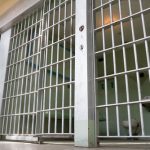If You’re Refused Bail, You’re Likely to Get a Harsher Sentence

The NSW adult prisoner population seems to have stabilised in recent times, after a half decade of dramatic increase, which saw the under 10,000 inmates of 2013 rise to a peak of 13,651 detainees in May last year.
And this steady increase in prison numbers has been attributed to both sentenced prisoners and those on remand, who are detainees that have been refused bail and are awaiting the outcome of their trials or sentencing.
Somewhat paradoxically, over the period of rising inmate numbers, crime rates have been declining. According to the NSW Bureau of Crime Statistics and Research (BOCSAR), the decades-long spiralling downwards of crime in this state, saw the rates hit a forty year low in December 2016.
Over the 24 months ending last December, none of the 17 major categories of crime were on the increase: two were trending downwards and the other 15 were stable. And as of March this year, there were 13,466 adult inmates in NSW, which was very similar to the figure in March last year.
But, while the number of inmates on remand in March was 4,778, which meant it was on par with the year prior, it still means that 35 percent of prisoners are unsentenced. And a recently released BOCSAR report found that inmates on remand are more likely to be sentenced to more time inside.
The consequences of remand
The Marginal Effect of Bail Decisions on Imprisonment, Failure to Appear, and Crime report analysed the outcomes of 42,362 first bail hearings over the period between 20 January 2015 and 30 June last year.
After crunching the numbers and accounting for variables – such as magistrate leniency – researcher Sara Rahman found that bail refusal leads to increased imprisonment rates, as well as “a significant effect on crime and failure to appear” before the courts.
The marginal effects on additionally released defendants – more than currently being granted bail – are a decrease in likelihood of imprisonment from 59 to 49 percent, as well as an increase in offending from 13.2 to 29.2 percent and a rise in failure to appear from 2.1 to 11.1 percent.
These figures translate to every 10 additional defendants being refused bail resulting in one extra person being imprisoned, while the numbers of accused offending on bail is reduced by 1.6 persons, as well as a resulting drop of 0.9 defendants absconding prior to their court appearance.
Weighing up the costs
And while these figures reveal the societal benefits of increasing remand numbers, Ms Rahman points out, this has to be balanced out against the additional costs rising remandee numbers place on the correctional system, as well as the effect it has on those refused bail.
Coming into contact with the prison system means an individual is more likely to end up back in it. The recidivism rate in NSW is the highest in the country at around 48 percent, which means that almost half the inmates in this state will return to gaol within two years of release.
And an increase in prisoners held on remand relates to a rise in the number of remandees released without being sentenced. And these released remandees are still more likely to return to prison, despite being found innocent of the offence they were refused bail over.
The show cause provisions
The cases Rahman based her study on transpired after changes to NSW bail laws took effect in January 2015. The Bail Amendment Act 2014 altered the Bail Act 2013 (NSW) in a number of ways, including the addition of the “show cause” provisions.
The amendment act inserted section 16B into the Bail Act, which lists a set of serious offences that bail is now outright refused for. Section 16A stipulates that a bail authority must refuse bail for “show cause offences” unless the accused can show why “detention is not justified”.
These show cause measures have been widely criticised for undermining the presumption of innocence, as those charged with certain crimes bear the burden of having to justify why they shouldn’t be detained, rather than the authorities having to show reasons as to why they should be.
The impact of amendments
The April 2018 BOCSAR report Did the 2013 Bail Act Increase the Risk of Bail Refusal? revealed that since the tougher bail laws came into play in January 2015, the number of average defendants refused bail by the courts is up by 11 percent.
The researchers of that paper found that over the two year period following the show cause changes there were 1,500 additional bail refusals made by the NSW courts for non-minor offences. And they added that the additional cost to the criminal justice system was substantial.
And these changes to the laws have impacted First Nations communities the hardest. There was a 12 percent increase in the number of Aboriginal people being refused bail by police, as well as a 13 percent rise in the courts refusing them bail.
A case of priorities
In regard to Rahman’s recent findings, BOCSAR acting executive director Jackie Fitzgerald said that while “remanding defendants in custody until their matter is determined has a significant incapacitation effect”, it comes at a high cost to the correctional system and the individual.
And “whether these costs outweigh the benefits achieved in terms of reduced offending and absconding is ultimately a political matter”, she remarked in a media release.
But, it seems that the NSW Liberal Nationals government actually believes that the “incapacitation effect” definitely outweighs “the high cost” to the system and the individuals. Indeed, it’s been investing in multiple expansions, re-openings and construction of prisons over recent years.
Build more gaols and fill them up
The 2016 Budget contained a $3.8 billion package to provide for an additional 7,000 prison beds across the state over a four year period, which, when completed, will allow NSW authorities to detain around 50 percent more inmates than are already on the inside.
And while it’s obvious that additional prisoners being remanded is simply increasing inmate numbers and the cost of the prison system, it’s plain to see that rather than look at alternative options to locking up more of the community, the government is at pains to accommodate doing just that.







